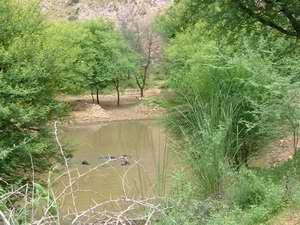
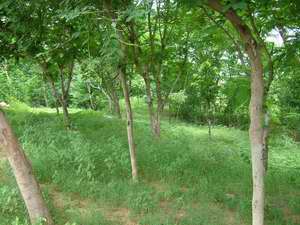
Gandhivan is the name of the place where 25ha wasteland was allotted to GBS by the Government of Rajasthan in the year 1991. At that time no single green leaf could be seen on and around this land, mainly because the villagers had been chopping down trees in want of fuel. Simultaneously the new plants couldn't grow up because of constant grazing of numerous cattle folk in the hilly area. So the project land was totally undulated and barren. There was no source of drinking water in the area. No one could imagine afforestation on this land. But now there is an orchard and small forest having over 50,000 plants of fruits, fodder, fuel, shadow, timber and flowers on this land.
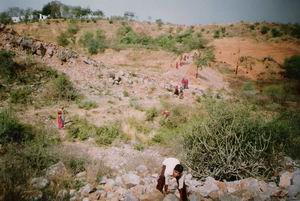
The idea for the project of Gandhivan was not just to appeal but to demonstrate before the government and community people that the number of problems of the villagers can be solved i.e. fuel, fodder, water, land degradation, soil erosion, desertification etc. by developing wastelands. As near about 34 million ha land lying as "wasteland" in Rajasthan, this contribution project was developed as a model which can be replicated, since Rajasthan contains 60% of the total desert area of India.
Moreover, the motive behind Gandhivan was to involve the community participation during the whole process of project implementation in order to raise self confidence among them as well as to illustrate how difficult it is to regenerate the nature and in contrast how nice and profitable the life with nature is.
[return to top]

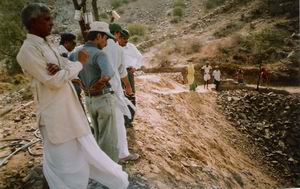
At the time of starting the Gandhivan project GBS had to overcome many challenges in addition to the fact that one couldn't find a single leaf in Ghadivan. Infrastructure problems where the most challenging problems as in the beginning there was no electricity. Moreover, the lack of a proper street was a hindrance for driving. Not to forget that GBS didn't have sufficient funds for the project.
[return to top]
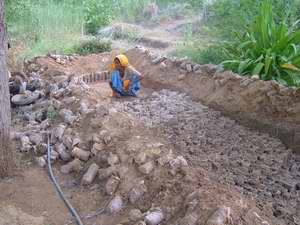 Nurseries were prepared in order to raise saplings. Every year saplings of various plant species are raised in nursery according to the plan. This is a regular on going activity.
Nurseries were prepared in order to raise saplings. Every year saplings of various plant species are raised in nursery according to the plan. This is a regular on going activity.
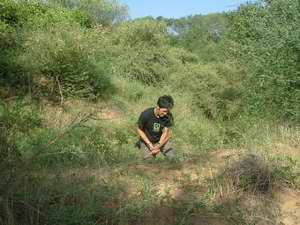 As there are numerous deep gullies on the project land through which rain water coming from the nearby Aravalli hills flew forcely soil erosion became a serious problem. Thus, some three hundred small mud dams were built to plug these gullies. By means of this not only the soil erosion could be checked but also a lot of saplings could be grown here.
Plugging the gullies changed the scenario of the area in such a way as a lot of plants of fuel and fodder species could grow in these gullies. Also the moisture was retained which helped in flourishing a thick layer of vegetation cover in and around.
As there are numerous deep gullies on the project land through which rain water coming from the nearby Aravalli hills flew forcely soil erosion became a serious problem. Thus, some three hundred small mud dams were built to plug these gullies. By means of this not only the soil erosion could be checked but also a lot of saplings could be grown here.
Plugging the gullies changed the scenario of the area in such a way as a lot of plants of fuel and fodder species could grow in these gullies. Also the moisture was retained which helped in flourishing a thick layer of vegetation cover in and around.
 A small check dam was built up at an alleyway to harvest the water. Through building this check dam the rain water could be preserved for birds and cattle of surrounding villages, soil erosion stopped, level of underground water be upraised in the bore well of Gandhivan and other wells of vicinity. Lots of indigenous plants like acacia grow now in the neighborhood of the dam, which provide both good quality of fodder and shelter to the herdsmen coming with their cattle folk. The fertile elements of soil flowing from the hills along with rain water enriched the land adherent to Gandhivan.
A small check dam was built up at an alleyway to harvest the water. Through building this check dam the rain water could be preserved for birds and cattle of surrounding villages, soil erosion stopped, level of underground water be upraised in the bore well of Gandhivan and other wells of vicinity. Lots of indigenous plants like acacia grow now in the neighborhood of the dam, which provide both good quality of fodder and shelter to the herdsmen coming with their cattle folk. The fertile elements of soil flowing from the hills along with rain water enriched the land adherent to Gandhivan.
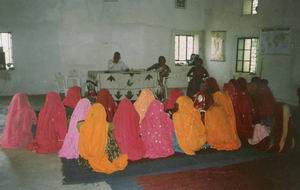 In Gandhivan a youth camp is organized twice a year where around 100 people, mostly students, join. They stay in Gandhivan for five days to make experiences such as nursery raising, plantation, gully plugging, check dam building etc which they share with eachother at night time when they also discuss global environment problems.
In Gandhivan a youth camp is organized twice a year where around 100 people, mostly students, join. They stay in Gandhivan for five days to make experiences such as nursery raising, plantation, gully plugging, check dam building etc which they share with eachother at night time when they also discuss global environment problems.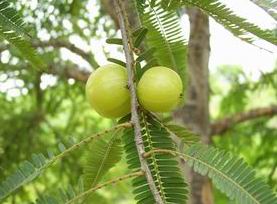
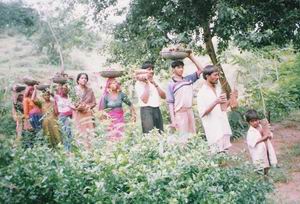
Most of the activities were carried out by the local rural women, as well as by handicapped and leprosy patients who were rehabilitated at Gandhivan. Furthermore, the members of local CBOs (community based organizations) like Mahila Mandals (women's groups), Navyuvak Madals (youth groups) etc supported the Gandivan project in carrying out many activities. Besides, there was also contribution from 7 to 8 experts in each field at the beginning of project.
Due to its enormous success the project will be implemented in the adjacent area of 5,000 hectare of land which is presently lying waste. One objective of the proposed project is to raise awareness among the community people and particularly among the women and youth. Moreover, over 400 million plants of various species of fuel, fodder, shadow, timber and fruits etc. should be planted and in doing so the problem of fuel and fodder of 40,000 people of the 20 neighboring villages can be solved. GBS also aims at promoting organic manure instead of pesticide, solar energy and several kinds of enviroment-friendly technologies. [return to top]